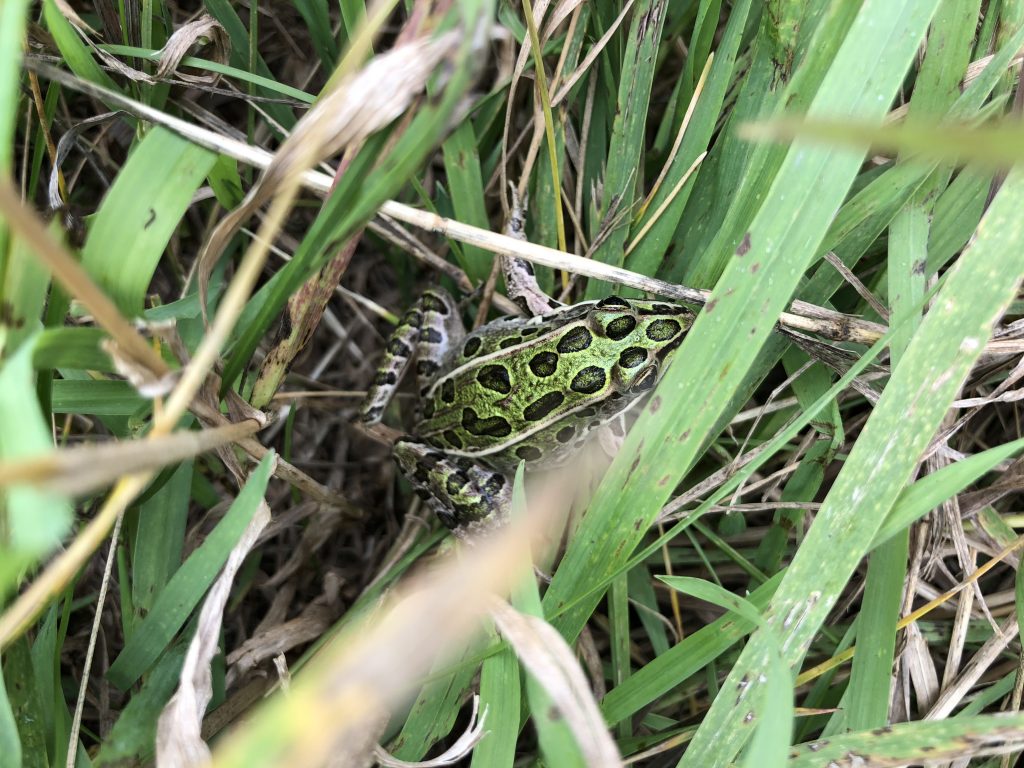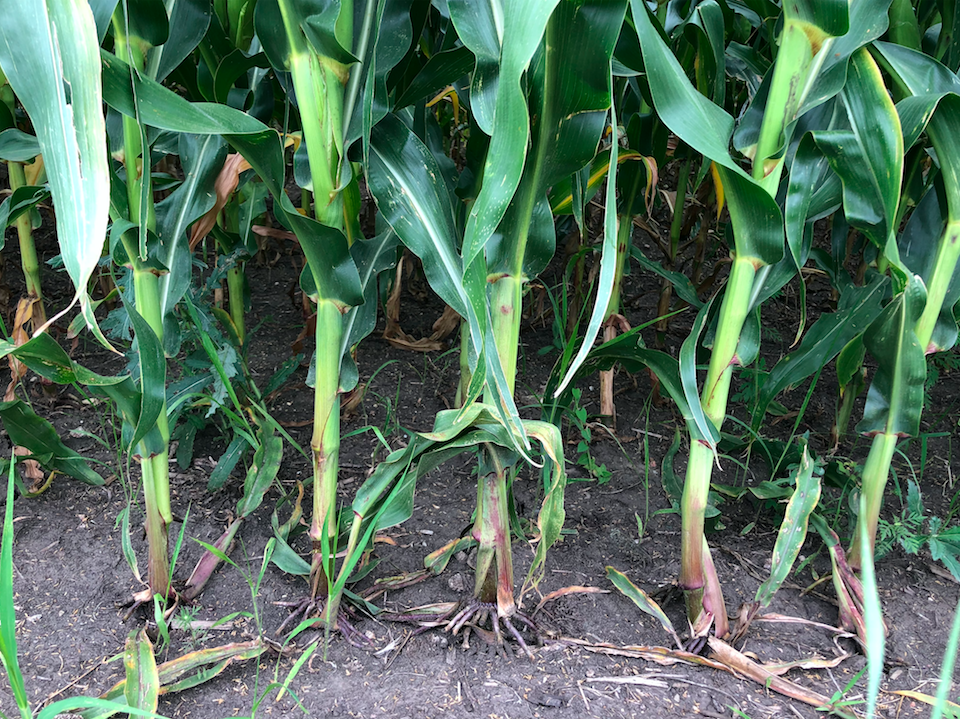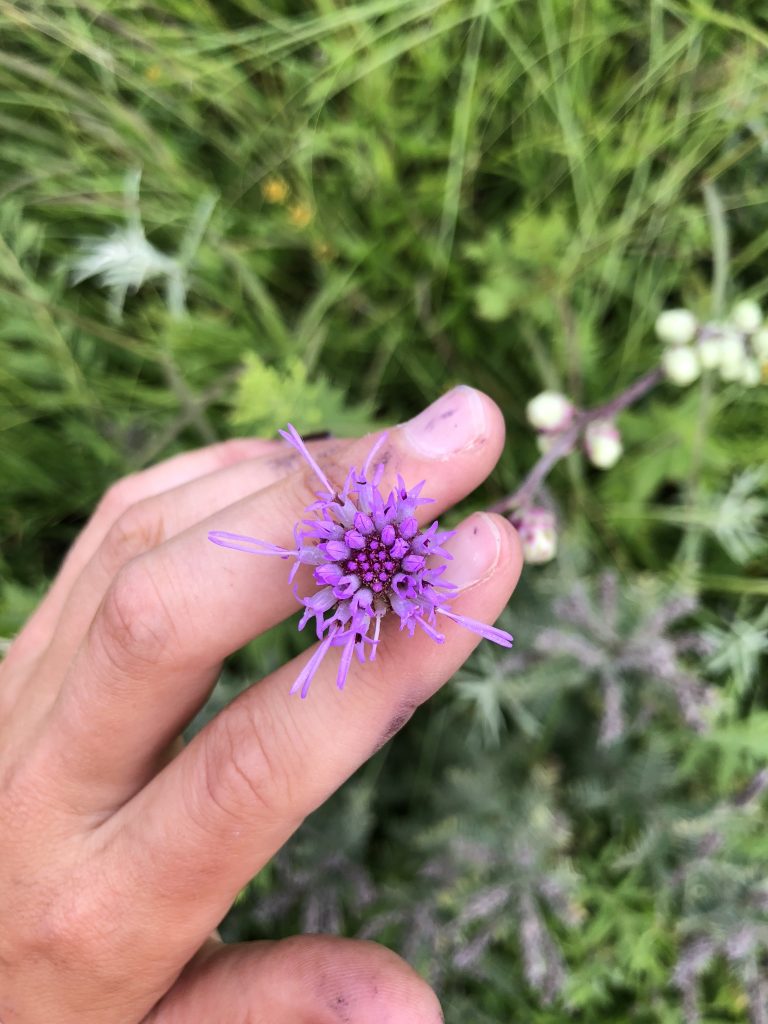Last week we read an article, William Cronon’s “The Trouble with Wildnerness” which got me thinking about the definition of nature and the different ways we, as humans, perceive nature. As I went about my work today, I considered these different conceptions.
In the morning, my advisor from school visited the Echinacea project and accompanied me to Staffanson. Dr. Knight is a dendrochronologist who works with really old trees (one is from 600BC) and uses their rings to piece together past climates.
When we first arrived at Staffanson, I began to trudge towards the transect, ready to begin work. Dr. Knight, however, trailed behind, looking all around. The first time I saw Staffanson, I know it was quite amazing and I know Dr. Knight felt similarly. While now I am more accustomed to this serene setting, I am often interrupted by a butterfly, a frog, or a particularly interesting flower, and am amazed all over again. Much environmental writing, like that of Thoreau and Muir, focuses on nature as pristine, even divine, a respite from the ills of human society.

Cirsium arvense with white flower instead of its normal lavender

Leopard Frog
As we approached the Southern side of Staffanson, where I monitor Liatris and Solidago flowering phenology, Dr. Knight noted the corn looming ominously in the distance. Rows upon rows of silent soldiers stood at the edge of the diverse colorful prairie. It was if Staffanson was a tiny oasis doomed to be trampled by the advancing marching army of corn. I felt a defender of the prairie, protecting the helpless prairie by studying how it could best be conserved. Conservationist writing often paints nature in this light, making nature appear vulnerable and in need of saving.


Flowering Liatris

Andropogon gerardii; Dr. Knight and I decided that its palette would be excellent for interior decorating. Walls=dark orange; trim=light yellow; furniture=deep purple
In the afternoon, we measured in P1. Sunburns, chigger bites, scratches, and other minor wounds resulted from this interaction with nature. I find research and the ability to observe nature’s curiosities worth all of these minor inconveniences. Maybe nature is harsh, hostile and inhospitable. Or maybe nature is just another part of the world to be deciphered to be learned from, to be studied.
Nature can seem pristine, vulnerable, harsh, and enigmatic. I’m not sure that these are entirely mutually exclusive, nor am I sure that one is more or less true than the others. Perhaps nature is all of these things, both gruesome and awe-inspiring, both dangerous and delicate, both puzzling and possessing answers. Regardless, I find the view across Staffanson prairie to be superior to any of which could be seen from a cubicle. This summer, all of us at the Echinacea Project pretty much have the best office space ever.

Leave a Reply